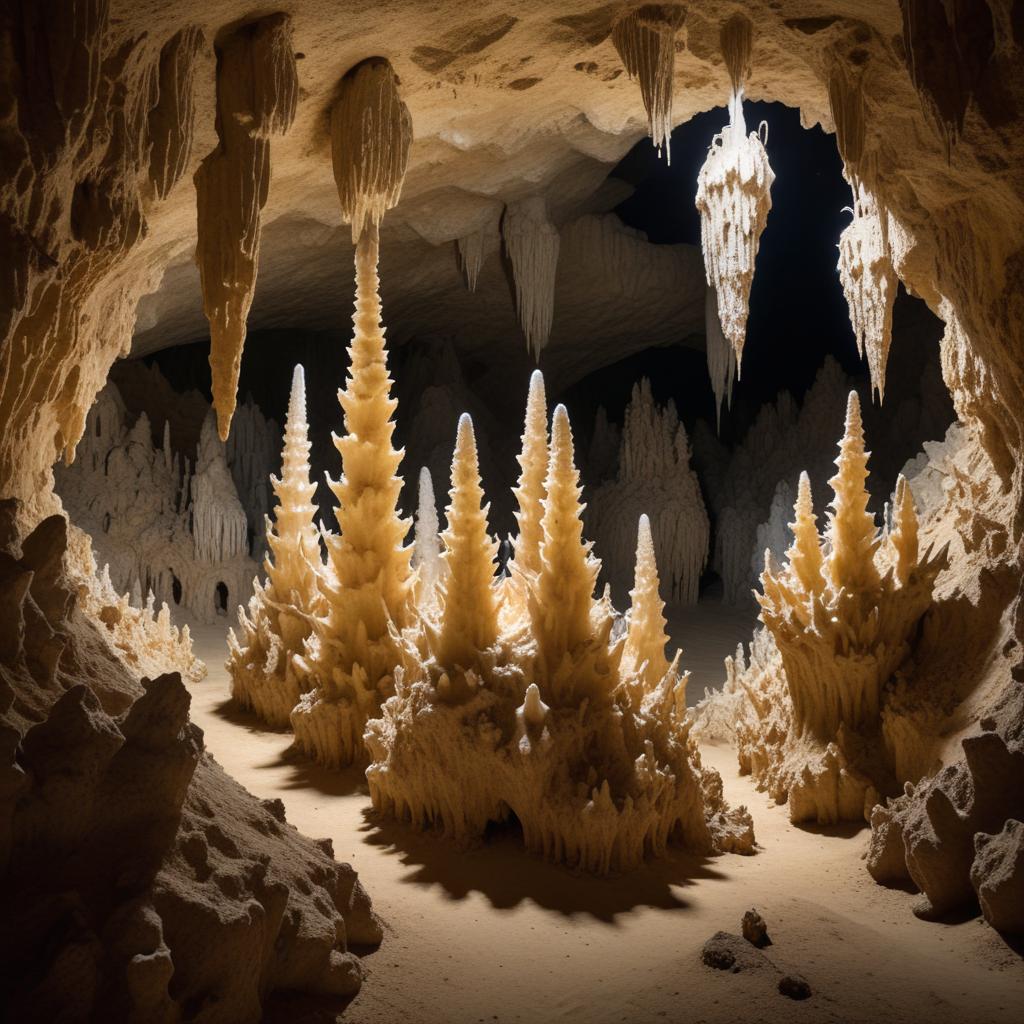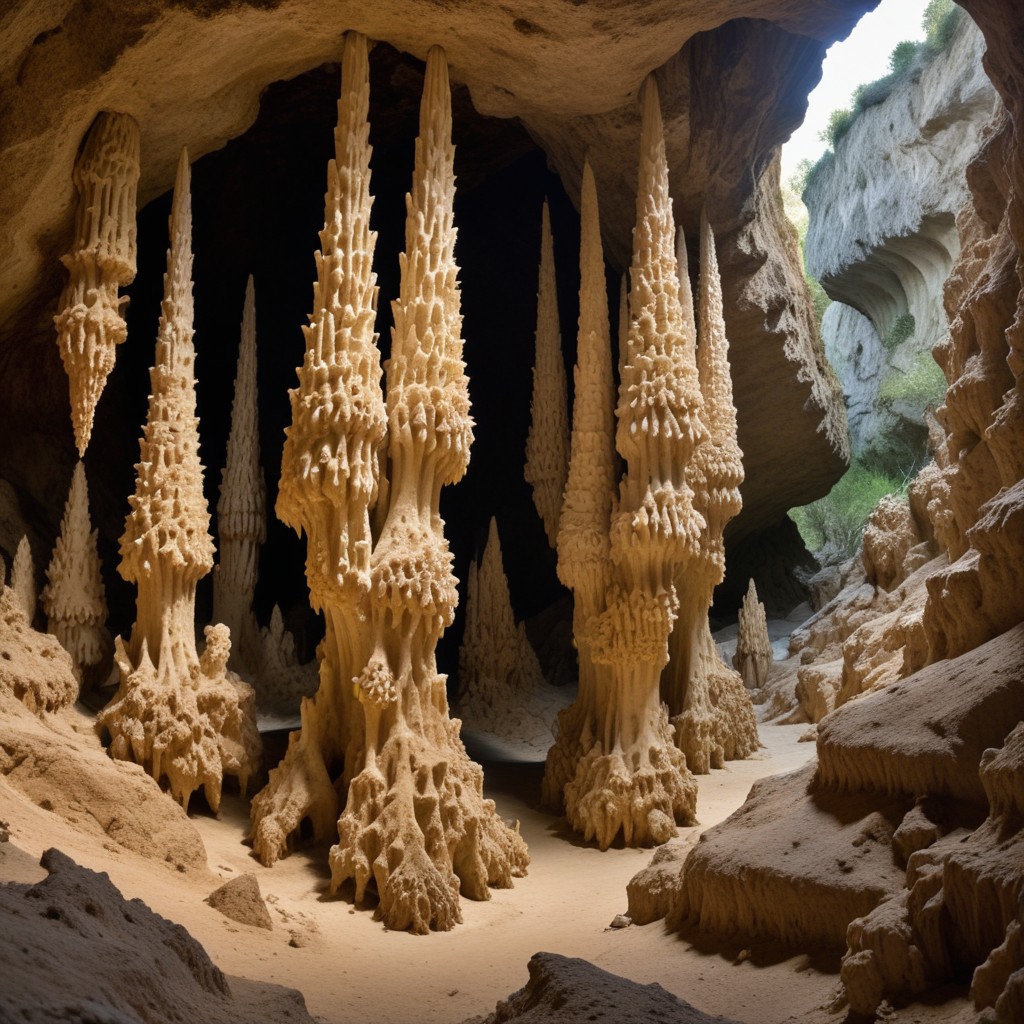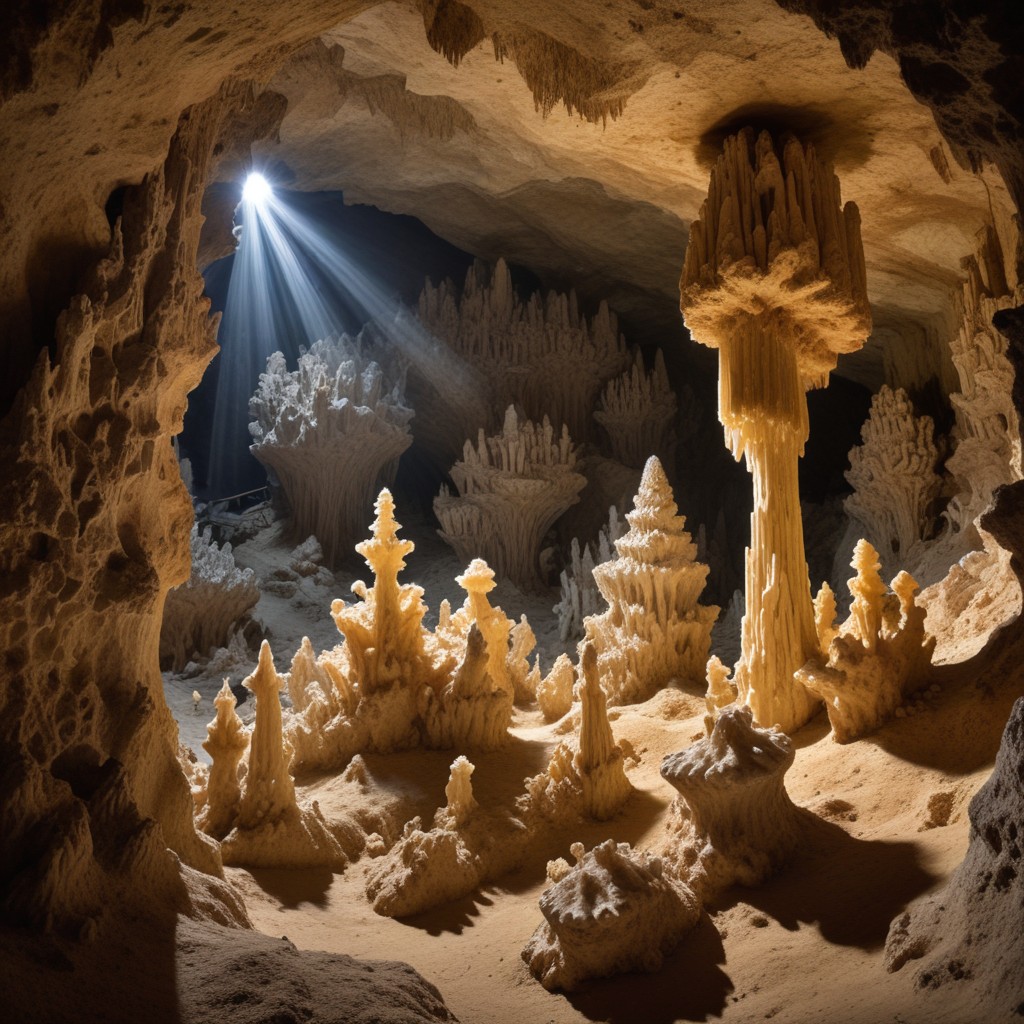Introduction
Peñiculs, derived from the Spanish word “peñiculs,” are unique natural formations found in various geological and biological settings. These structures, from the stalactites in caves to the projections on desert plants, highlight the intricate beauty of nature and the importance of conservation efforts.
Key Takeaways
- Peñiculs: Unique natural formations found in geological and biological contexts.
- Geologic peñiculs: Formed through mineral precipitation, like stalactites and stalagmites.
- Ecological and Cultural Significance: Provide climate data, support biodiversity, and hold cultural importance.
- Conservation Efforts: Essential to protect cave environments and coral reefs from human impact and climate change.
Understanding Peñiculs
Derived from the Spanish word “Peñicula” (meaning small rocky outcrop), peñiculs are found in diverse environments. Their shape and form vary significantly, depending on the specific conditions of their terrestrial or marine habitats.
Geologic Peñiculs
Geologic Peñiculs, also known as mineral formations, develop through an intriguing process of mineral precipitation. Some of these formations like the probably the most famous formation of the limestone caves are the stalactites and the stalagmites are actually some of the finest works of art created by nature over time. Here’s an in-depth look at how these geological wonders form: Here’s an in-depth look at how these geological wonders form:
Initial Stage: Carbon Dioxide Absorption
- Rainwater and Organic Matter Interaction: They explained that formation process commences by precipitation absorbing liter from the atmosphere and debris on the ground. This turns the rainwater into a weak carbonic acid solution.
- Formation of Carbonic Acid: This weak carbonic acid is strong enough to react with minerals in the soil and rock, preparing for the next phase of the process.

Dissolution Stage: Limestone Dissolution
- Acidic Water Seeping Through Soil and Rock: Once carbonic acid containing water seeps into the ground and passes through the layers of the soil and rocks, the solubility of limestone which is calcium carbonate begins.
- Creation of Solution Pockets: This dissolution produce many small cavities and channels within the rock which increase in size as more limestone is dissolved.
- Transportation of Dissolved Calcium Carbonate: The water, now enriched with dissolved calcium carbonate, continues its journey deeper into the cave system, carrying essential components for forming peñiculs.
Precipitation Stage: Formation of Peñiculs
- Pressure Drop and Carbon Dioxide Release: When the water containing calcium carbonate comes into contact with an open area in the cave-bottom, the floor or the ceiling, then the water that has the ability to absorb carbon dioxide will do so on account of the pressure difference.
- Precipitation of Calcium Carbonate: This results to the release of carbon dioxide, which reduces the solubility of calcium carbonate in the water and causes it to fall out of solution. Eventually, they aggregate in the form of solid structures over time of the precipitated calcium carbonate particles.
- Growth of Stalactites and Stalagmites: Stalactites, on the other hand, develop through the accumulation of deposits on the floor of the cave and grow upwards towards the roof of the cave. At the same time, droplets of water are precipitating on the shallow pool of the cave floor and adding the layers of calcium carbonate, generating the formation of the stalagmites that grow in the opposite direction of the stalactites.
- Continuous Formation and Growth: This process is a continuous of this process. Every single speck of calcium-bearing water impacts these formations over long millennia, which might evolve into large and complicated structures, further beautifying the cave’s inside.

Variations in Geologic Peñiculs
- Temperature and Mineral Variations: However, depending on the external conditions of the environment in which the peñiculs are located, there may be differences in shapes as well as the ways in which they grow, temperature, concentration of dissolved minerals as well as other impurities that may be present in the water the peñiculs are submerged in different.
- Different Types of Formations: Besides stalactites and stalagmites, other formations such as columns (where stalactites and stalagmites meet) and flowstones (sheets of minerals deposited on cave walls) can also develop through similar processes.
The formation of geologic peñiculs is a testament to the slow yet powerful forces of nature. These structures not only beautify caves but also provide valuable insights into geological processes and past climate conditions. Understanding the formation and growth of peñiculs helps us appreciate the complexity and wonder of our natural world.
Conservation
Cave Management
- Limiting Access to Sensitive Areas: To prevent damage to delicate formations, access to sensitive cave areas is often restricted. Controlled entry ensures that visitors do not inadvertently harm these natural wonders.
- Educating Visitors on Responsible Cave Behavior: It’s crucial to inform visitors about the importance of not touching or disturbing cave formations. Education programs and signage can guide tourists to act responsibly.
- Monitoring the Health of Cave Ecosystems: Regular monitoring helps in understanding the impact of human activity and natural changes on cave ecosystems. This includes tracking air quality, water levels, and the growth rates of formations.
Coral Reef Conservation
- Protecting Marine Areas: The conservation of coral peñiculs will require protection from destructive interference, which may be attained by designating marine protected areas. These areas are preserved from direct human interferences in order to afford the ecosystem an opportunity to unfold.
- Regulating Fishing Practices: Sustainable fishing practices avoid fishing over quota time and simultaneously protects the reef from being easily demolished by fishing gears. Measures can include alternative fishing methods such as the prohibition of specific forms of fishing equipment and several specifications of allowable catch quotas.
- Restoring Damaged Reefs: This is done by adopting methods like coral farming and coral transplantation which aim at restoring the damaged coral reefs. These corals are propagated in cultivation techniques of coral gardening and finally relocated in the area of impairment to recover.
- Combating Climate Change: Parsing through bulletin boards, it is evident that combating climate change remains central to the existence of coral reefs. Among the measures towards preventing climate change and its impact on the seas, there are the problem of international cooperation and the development of policies that prevent the increase in carbon emission.
Ecological and Cultural Significance
Ecological Importance
- Geological Peñiculs: These formations become a useful data for the scientists, since it contains information about the climate in Ancient times. In this way, by analyzing multiple layers of minerals, researchers are able to guess about the climate shifts, fluctuations in waterfalls, and alteration of gaseous environment of the Earth for thousands of years.
- Coral Peñiculs: In seas, coral peñiculs provide support to the reefs as they hold various structures that form part of the reef. Some of the benefits include, they harbor various forms of aquatic life, provide anchorage for breeding and nursing young and still act as breakwaters by reducing energy of waves hence preventing coastlines from regular attacks of erosion . It has been a common tradition for people to relate these sites to myths and spirits; they believed them to be homes of spirits or gods as well as used for worshiping.
Cultural Importance
- Ancient Civilizations: Many ancient cultures regarded caves with prominent peñicul formations as sacred. These sites were often associated with myths and spiritual beliefs, considered as dwellings of gods or spirits, and used for religious ceremonies.
- Modern Tourism: Today, those wonderful parts of nature are the main tourist and adventurous destinations. Since, peñiculs can be best described as architectural wonders carved by nature, the sight of these marvel not only leads to the admiration of conservation, but also calls to order to ensure the sustainable protection of such invaluable natural treasures.
Diversity of Geological Peñiculs
Geological peñiculs are not limited to limestone caves. They can form in various settings, each creating unique formations that differ in appearance and structure.

Gypsum Caves
- Gypsum Flowers: It is a fact that gypsum caves bring gypsum flowers, types of formations displaying silky, needle-like structures. While these complex shapes and patterns are clearly the result of mineral deposition, the deposits are of calcium sulfate rather than calcium carbonate, revealing the variety of ways that minerals can accumulate in different cave habits.
Lava Tubes
- Intricate, Glassy Structures: Lava tubes that are formed through flowing molten lava can slow down and solidify to create these almost matrix like fixtures. They are formed from the lava and then quickly cooled and began to form molds which are of different shapes and surface than those of caves that are made of limestone or gypsum.
The following concept elaboration is based upon the assumption that recognizing the bounded nature and simultaneously increasing our knowledge of what types of geological peñiculs exist enables a better understanding of the diverse natural processes that forms these stunning spiling structures. Every kind of peñicul that may occur in a limestone cave, gypsum cave, or a lava tube has a different narrative to share on the geological evolution and the prevailing situation in its site.
Botanical peñiculs
Thus, in the plant world, peñiculs are small, hardened pushing rods on particular plants which, in most cases, are designed for protecting facilities or assisting in the reproductive process. These botanical peñiculs are found in regions of low rainfall; plants in the desert have learned to cope with the ground conditions. For instance, there are numerous adaptations where some forms of the cacti species contain spiny protrusions in order to minimize water loss and to discourage foliage eaters.
Conservation Efforts
Because of the ecological and cultural values of such system referred to as peñicul, this form of vegetation receives considerable protection. Minimizing pollution and human interference is important in the protection of these structures as it would threaten the stability of the caves. Likewise, coral reefs are endangered by climate change, OA, and other anthrogenetic impacts, with concerted international intervention needed to keep the world’s reefs alive.
Conclusion
peñiculs, in all their various forms, highlight the intricate beauty and complexity of nature. Found in caves, beneath the ocean, or in desert plants, these small structures hold significant value. Understanding and protecting peñiculs helps preserve our natural heritage and deepens our connection to the world around us. Studying and conserving peñiculs is vital for maintaining the health and beauty of our natural world for future generations.
FAQs
- What are peñiculs?
- peñiculs are small, naturally occurring structures found in various geological and biological contexts, including stalactites, stalagmites, and certain plant projections.
- How do geological peñiculs form?
- Geological peñiculs form through mineral deposition from water. For example, in limestone caves, water rich in calcium carbonate drips from the ceiling, depositing the mineral over time to form stalactites and stalagmites.











